Which camera is better - Nikon or Canon
Perhaps the most common camera brands are Nikon and Canon. The equipment of these manufacturers is more widely represented on the market and many buyers are wondering what is better to choose. An unequivocal answer is quite difficult to give, because both firms have their own advantages. Therefore, below will be presented a comparison of cameras Canon and Nikon.
Content
Nikon benefits
The company Nikon comes from Japan. Initially they were engaged in the creation high-end optics. During the Second World War, the company expanded significantly, as it received huge orders for the production of binoculars, optics for airplanes, ships and other equipment. After the victory of the USSR in the war, the company returned to the development of optical devices and in 1948 created its first camera.
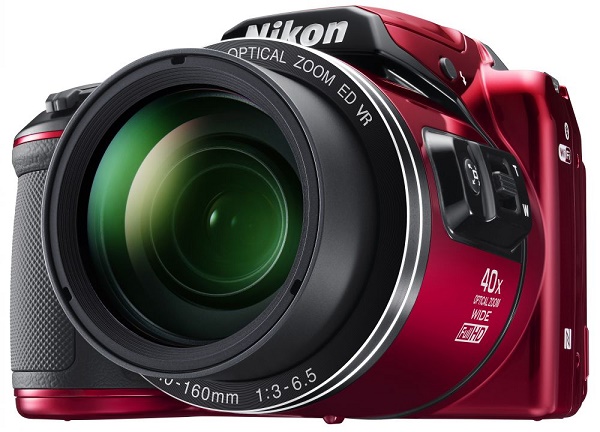
The advantages in Nikon cameras are as follows.
- VR - optical image stabilization. Special sensors understand in which direction the camera has moved, and transmit the task to the magnets to shift the lens unit in the opposite direction.

- Motion detection. If a moving object appears in the frame, the camera automatically reduces the exposure time to reduce blurring.
- Object management. With this function, the user can select a specific object inside the frame and, by activating its maintenance, ensure that the focus even when the frame or object itself is shifted to remain on it.
- Intellectual portrait. Used in compact cameras. The device recognizes a smile and works when a person smiles. If the subject closes the eyes, the frame will not be saved or a warning will appear on the screen.
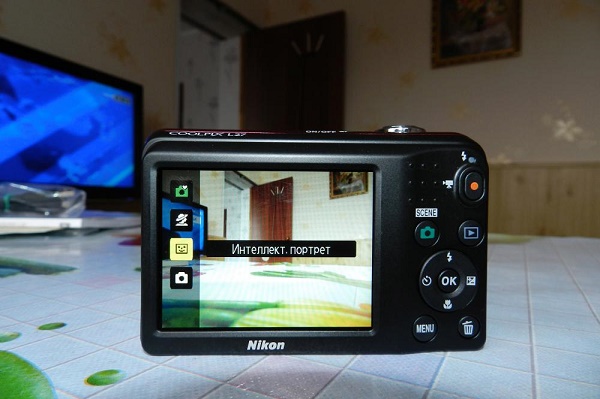
- Plot mode. The device itself chooses the settings, if the subject of photography has changed. Used in compact models.
- CMOS - matrix with backlight function. The principle is that the pixel has a large surface due to the presence of reading elements on the back of the matrix.This provides better shooting in low light conditions.
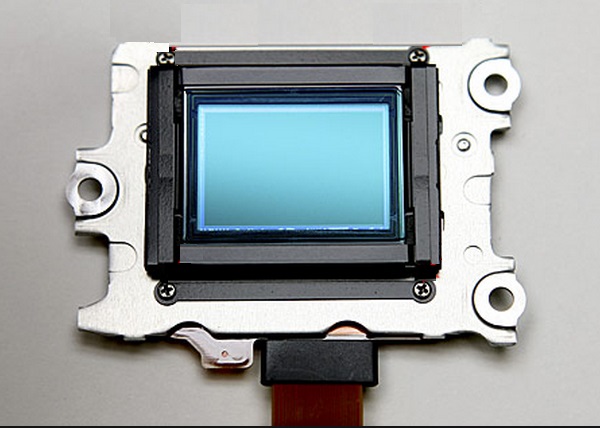
- Flash exposure. With each photo, the device makes the flash perfect. The technology is patented.
- The diaphragm in the Nikon cameras has 7 or 9 petals. The odd number of petals makes the photo of bright objects in the dark more interesting.
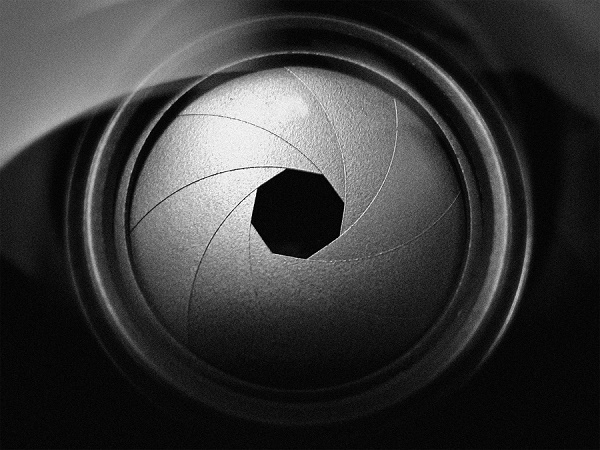
- More focus points in comparison with Canon.
- Special backlight for night focus. It provides uniform light and allows you to accurately focus the image. At Canon flash before the picture flashes several times, which provides focus. For the person being photographed, this is very unpleasant.
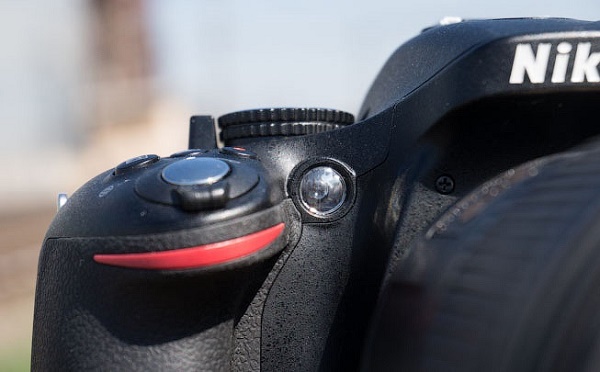
- All Nikon cameras are determined by the PC, as an external drive. For Canon cameras, you often have to install a special application.
Canon virtues
Unlike its direct competitor, the Canon brand did not originate from the merger of several mature corporations, but on the sheer enthusiasm of three friends. The heroes left the state company and, having bought all the available camera models on the Japanese market, they started creating their own camera. The first camera was released in 1935, and in 1956 the market appeared first movie camera.
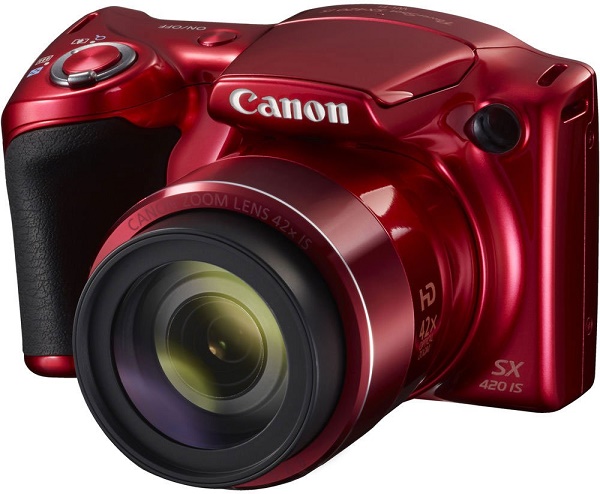
Consider the merits of cameras Canon.
- The mode of saving the settings “C”. Canon cameras allow you to save custom settings and create different options for a landscape, portrait or sport.
- Automatic display brightness control system camera.
- IS - optical image stabilization. The technology is similar to Nikon's VR, but has its own characteristics.
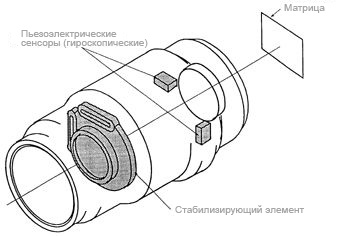
- Canon displays convey colors better. This allows you to better understand whether the photo turned out the way it was intended. They are also larger and the photos are better seen. Most displays have an oleophobic and anti-reflective coating.
- Canon lenses are cheaper and much more. In addition, almost all of them are made in Japan. In general, the cost of accessories for Canon cameras is 15-20% cheaper, and their choice is much wider.
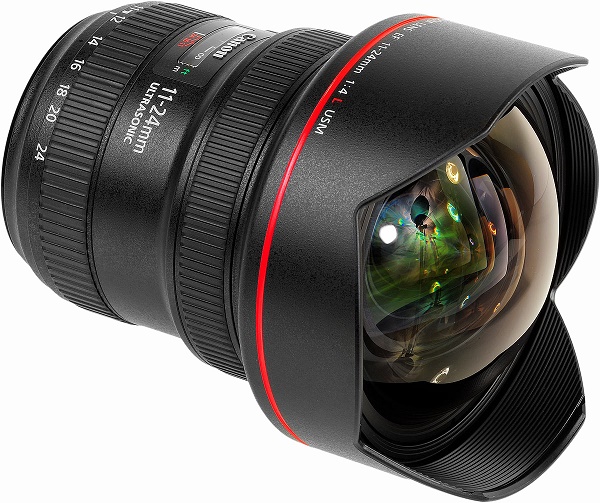
Lens Canon EF 11-24mm f / 4L USM
- In low-cost models autofocus is faster and more accurate. At Nikon in the budget devices for every 30 frames skips defocus.
- Compact cameras have simple and clear menu with a minimum of settings. Nikon cameras are more complex for the unprepared user.
- Most Canon lenses are interchangeable., it is enough to choose an adapter ring to put the lens on the wrong camera. In addition, each lens has its own drive for focusing.
- Displays are made from red-hot glass.
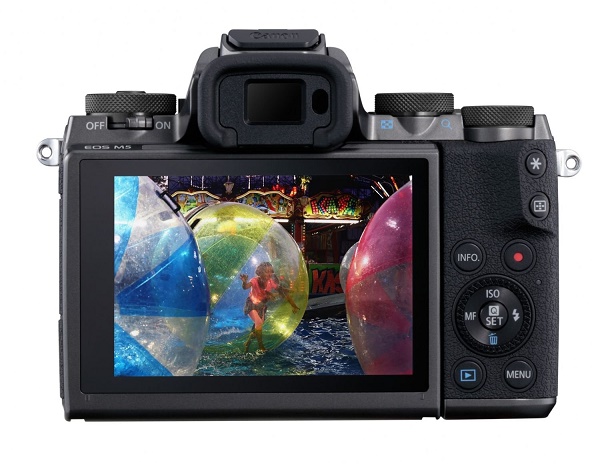
An interesting fact is that companies were created with different goals, but over time, roles have changed. Nikon initially had a wider production, and then focused on the production of cameras and lenses to them. Canon was created as a brand for the production of cameras, but now has a wide production capacity and produces different equipment.
It is still impossible to answer which camera is better. It will be correct to choose the best model for the specific tasks of the photographer. Another important nuance: cameras cannot be compared only by their characteristics, since they can give an ambiguous answer.
Rulers
Any manufacturer of equipment has several lines of its products with different purposes and, accordingly, functionality. Below are the line of brands Nikon and Canon.
Nikon
Nikon is currently producing three main series of cameras - SLR, compact and mirrorless:
- Nikon 1 - a series of mirrorless models;
- Nikon COOLPIX - compact cameras;
- Nikon D - SLR cameras.
AT COOLPIX series You can observe the division into models with different letters in the title:
- A and L - amateur simple cameras;
- S-stylish compact devices;
- P and B - ultrazoom;
- W - Devices with protection against dust and moisture, are designed for extreme conditions.
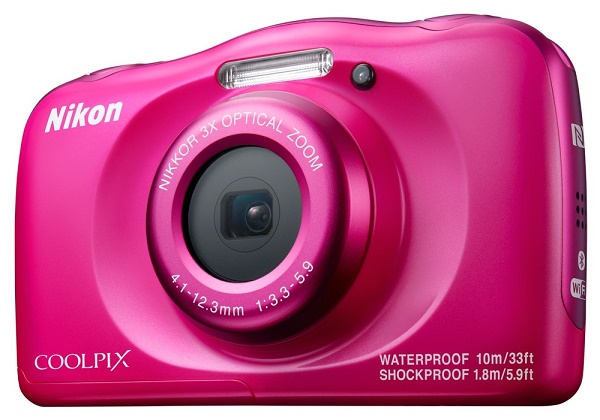
Nikon Coolpix W100 digital camera
Nikon SLR cameras always start with the letter D, but after the digital designation you can find a number of letters. All of them are not attributed randomly.
- S - updated model without major improvements;
- H- improved continuous shooting;
- X - model with an increased number of pixels;
- E - model without a Low-pass filter (better copes with noise);
- A - cameras with the function of shooting the night sky;
- F - body in retro style.

Nikon D610 Mirror Camera Kit 24-85
Among other things, conditionally, all Nikon SLR cameras can be divided into flagship, professional, advanced for amateur and just amateur cameras.
Canon
All Canon devices can also be divided into mirror, mirrorless and compact. The first are labeled EOS M, the second EOS.

Mirrorless camera Canon EOS M6
Compact cameras among themselves have the following division:
- PowerShot D - dust and waterproof models;
- Ixus - compact cameras in a stylish package with the simplest functionality;
- PowerShot N - a series of amateur cameras with enhanced functionality and symmetrical design;
- PowerShot SX - ultrazoom with compact body;
- PowerShot G - compact cameras with great functionality and a full set of manual settings, as well as a large matrix size.
What functions of cameras should you choose when choosing
In general, the comparison of cameras does not give special results, since the general conclusion about both brands will be approximately the same. However, in terms of numbers, both brands have advantages in one way or another.
- Matrix size. The Nikon company in mirror cameras uses a matrix of the size of 22 * 16 mm, at Canon - 22 * 15 mm. The difference is not significant, but for not full-frame SLR cameras, even 1 mm is crucial. Immediately it should be emphasized that most professionals prefer full-frame Canon models, rather than Nikon. Accordingly, if we are talking about a smaller matrix, then priorities change.
- Focus points. In this parameter Nikon is always in the lead. According to user feedback, there really is a difference in the quality of focusing and maintaining the object depending on the number of points.
- Flash. It was already mentioned above that the Nikon flash works better, and at night, focusing at the expense of a separate backlight bulb is much more accurate. Flash control is also implemented in the Nikon cameras more conveniently.
- Interface. Among the mirror devices, Nikon is in the lead, with compact cameras it is very difficult to understand all the settings of this brand. Therefore, for low-cost compact models, the interface advantage remains with Canon.
- RAW format. In the RAW format, both brands distort colors. Nikon rolls to a green shade, Canon to a blue and red.
- Video. According to user feedback, the Canon company is the undisputed leader here.
- Production. The Canon company prefers to assemble on the territory of their country, and produces all the dies independently. Nikon devices and accessories are assembled in foreign countries, and the matrix for many models are purchased from Sony and Toshiba.
- Cost On average, cameras from both brands cost approximately the same. If we are talking about accessories, namely lenses and flashes, here Nikon will be more expensive. The reason is that the quality of the lens assembly is higher. Canon's low-cost lenses, according to the owners, can squeak and play.It should be noted that the choice of accessories from the company Nikon is much smaller.
- Lenses. Nikon company produces lenses without a built-in drive, that is, interchangeability is not very well developed here. However, the lenses of this brand often give a clearer picture.
In addition to the above features it is worthwhile to compare the dimensions and the ergonomics of the cameras, as well as the processor. There is no clear leader here: each company uses its own processors and they cope well with their tasks. Of course, according to the models in one price category it will always be possible to find a leader in a particular company. When comparing the size of cameras and ergonomics, it should be borne in mind that everything here is also ambiguous. Both companies have models with a lightweight or reduced body.

Competitors
Many people forget that Canon and Nikon SLR cameras are not the only ones on the market, although they are more widely represented. Professionals know that fairly good devices produce the Sony and Olympus brand, but because of the smaller number of models, they cannot compete as full-fledged ones.
Olympus
Olympus is an old company that, like its competitors, did not immediately come to the production of cameras. The brand appeared in 1919, but the first camera was released only in 1934. The cameras from the company Olympus are now distinguished by good quality and best value for moneyHowever, due to the peculiarities of the development, the brand could not achieve popularity with professionals.
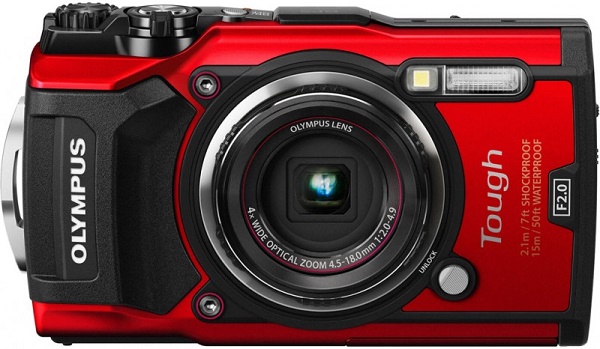
From the very beginning, the company went its own way, and where its rivals reworked old designs, Olympus invented something new. For example, this brand first began to produce devices with moisture and dust protection. Another technology created by this brand is framing on screen. Today it is used in all major brands.
In addition, the brand is now actively developing a line of micro 4/3 mirrorless cameras, the 4/3 standard itself was also developed by the Olympus brand.
Olympus Rulers:
- OM-D - SLR cameras;
- Pen - the latest technology + retro design;
- Stylus - travel cameras, improved night shooting, powerful lenses with compact camera dimensions;
- Tough - models for shooting in extreme conditions.
Sony
Sony has a long history and is not required to submit it separately.The development and production of cameras the company began after Konika brand shoppingwho was engaged in this technique at a time when Sony was just starting its journey. From this point on, the launch of various cameras on the market begins, most of which differed from competitor models in their forms, information carriers and other features.

Currently Sony cameras have following advantages:
- optics from Carl Zeiss;
- patented Memory Stick and Memory Stick PRO;
- SteadyShot Inside - the patented camera stabilization technology built into the camera itself (with competitors, stabilization is in the lens);
- Auto HDR - the camera takes two pictures with different exposures, and then combines them into one, thereby improving the clarity of the image;
Rulers:
- compact cameras CyberShot;
- Alpha series of mirrorless cameras;
- Alpha series of SLR cameras.
findings
In today's market, the choice of cameras and brands is very large. The leaders in terms of recognition and the number of models are Canon and Nikon. Each of these brands has its own advantages and disadvantages. To find the right camera for yourself, you do not just have to look at the numbers or listen to the advice of your friends. It is important to answer the question of why you need a camera, and what they will shoot, as well as decide on the price. After that, you can start exploring specific models for reviews, reviews, and even going to the store to see them live. Only with this approach to purchase, you can choose the best option for your purposes.

/rating_off.png)











